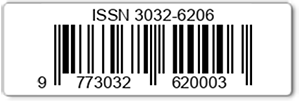Peffect Of Debt Levels, Book Tax Difference, Sales Volatility And Operating Cash Flows On Profit Persistence
Keywords:
Debt Level, Book Tax Difference, Sales Volatility ProfitPersistence and firm sizeAbstract
The purpose of this study was to determine the effect of Debt Level, Book Tax Difference, and Sales Volatility on Manufacturing companies in the Food and Beverage sub-sector listed on the Indonesia Stock Exchange (IDX). The research time period used is 5 years, namely the 2016-2020 period. The population of this study includes Manufacturing companies in the Food and Beverage sub-sector listed on the Indonesia Stock Exchange (IDX) for the 2016-2020 period. The sampling technique used was purposive sampling technique. Based on the predetermined criteria obtained 10 companies. The type of data used is secondary data obtained from the Indonesia Stock Exchange website. The analytical method used is panel data regression analysis supported by the Eviews 9.0 program. The results of the study indicate that the level of debt has an effect on Earning Persistence, while Book Tax Difference and Sales Volatility indicate that together they have no effect on Earning Persistence and firm size.
References
Ahnan, ZM, & Murwaningsari, E. (2019). The Effect of Book-Tax Differences, and
Executive Compensation on Earnings Persistence with Real Earnings Management as Moderating Variable. Research Journal of Finance And Accounting, 10(5), 54–63.https://doi.org/10.7176/RJFA
Asma, T.N. (2012). The Effect of Cash Flow and the Difference between Accounting Profit and
Fiscal Profit Against Profit Persistence. Padang State University Accounting Journal, 1–16
Bria, ER, Putu, N., & Mendra, Y. (2019). Effect of Operating Cash Flow Statements and Profit
on Investment Decisions. Collection of Accounting Student Research Results (KHARISMA), 1(1), 5876.https://ejournal.unmas.ac.id/index.php/kharisma/article/view/521
Brolin, A. R., & Rohman, A. (2014). The Effect of Book Tax Differences on
Profit management. Diponegoro Journal of Accounting, 03(02),1–13.http://ejournal-s1.undip.ac.id/index.php/accounting
Dechow, P. M., & Dichev, I. D. (2002). Quality Earnings: The Accruals Accrual
Estimation Errors. The Accounting Review, 77(2002), 35–59.
Dewi, NPL, & Putri, IGA . AD (2015). The Effect of Book-Tax Differences
, Operating Cash Flow, Accrual Cash Flow, and Company Size on Profit Persistence. Udayana University Accounting Journal, 1(10), 244–260.
Fanani, Z. (2010). Analysis of Determining Factors of Profit Persistence. Journal of Accounting And
Indonesian Finance, 7(1), 109–123.https://doi.org/10.21002/jaki.2010.06
Ghozali, I. (2018). Multivariate Analysis Application with the IBM SPSS 25 Program (9th
Ed.). Semarang: Diponegoro University Publishing Agency.
Gujarati, D.N. (2003). Basic Econometrics 4th Edition. In McGraw-Hill Higher Education
(4th Ed.). Mcgraw-Hill Higher Education.
Gujarati, D. N., & Porter, D. C. (2009). Basic Econometrics 5th Edition. In Mc-Graw-Hill.
Mc-Graw-Hill. Gunarto, RI (2019). The Effect of Book Tax Difference and Debt Levels on Profit Persistence. Indonesian Journal of Sustainable Accounting, 2(3), 328–344.
Holly, A. (2019). Cash Flow Volatility, Debt Levels, Book Tax Difference and
Impact on Profit Persistence. Teaching, 2(2), 121–151.
Ika, A. (2016, June 8). Pwc: 40 World Mining Companies Experience Losses of Around IDR
5 Trillion.kompas.com.https://money.kompas.com/read/2016/06/08/150000126/pwc.40.kompas.tambang.du nia.alami.kerugian.around.Rp.364.5.trillion
Khasanah, AU, & Jasman. (2019). Factors Affecting Profit Persistence.
Journal of Business Research, 3(1), 66–74.http://journal.univpancasila.ac.id/index.php/jrb/
Downloads
Published
Issue
Section
License
Copyright (c) 2024 Farah Fauziah, Dirvi Surya Abbas (Author)

This work is licensed under a Creative Commons Attribution 4.0 International License.
Simposium Ilmiah Akuntansi under the terms of a Creative Commons Attribution 4.0 International License / CC BY 4.0 This license permits anyone to copy and redistribute this material in any form or format, compose, modify, and make derivative works of this material for any purpose, including commercial purposes, so long as they include credit to the Author of the original work.










